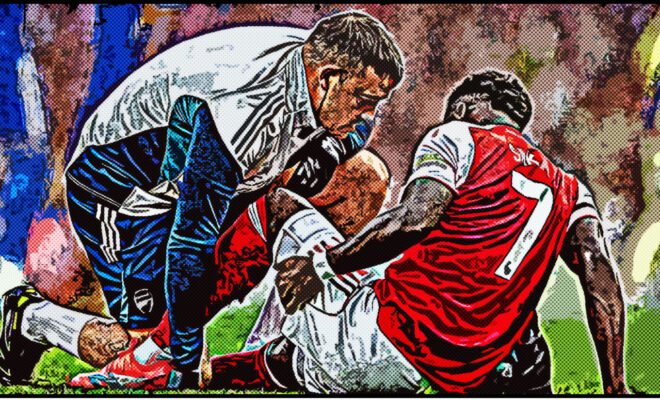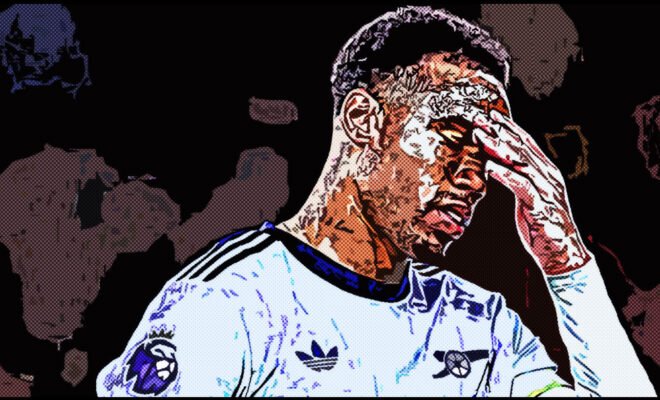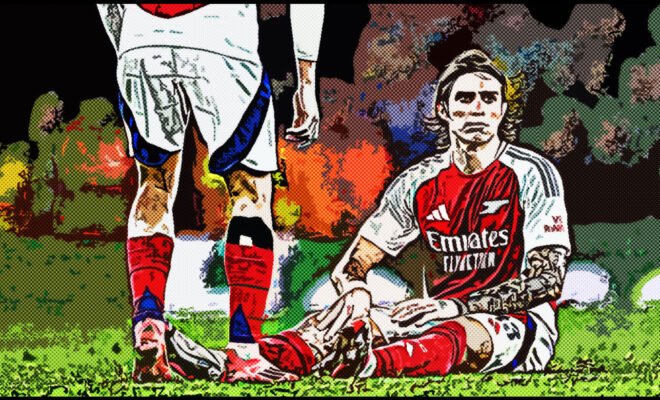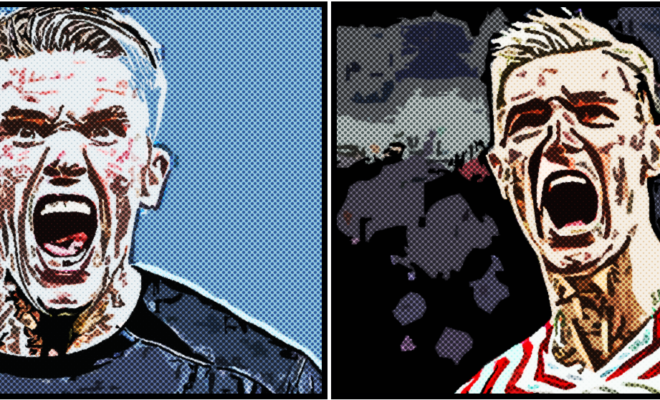Football’s Injury Epidemic: How Fixture Congestion Is Breaking the Game’s Biggest Stars

Football’s relentless schedule is taking its toll. Arsenal fans have witnessed firsthand how fixture congestion can devastate a squad. This season alone, Arsenal supporters have seen Kai Havertz, Bukayo Saka, and Gabriel Martinelli suffering significant hamstring injuries, raising serious concerns about the modern game’s physical demands. They are not alone—across Europe’s top leagues, players are breaking down at alarming rates, with clubs struggling to manage workload and recovery. If you’re looking for a thrilling experience in Canada, look no further than Let’s Go Casino Canada. This exciting destination offers a wide range of games and activities that are sure to keep you entertained for hours. From classic slots to table games, there’s something for everyone at Let’s Go Casino Canada. But before you head out, you might be wondering about the rules and regulations surrounding gaming in Canada. For more information on this topic, you can visit https://isnahalal.ca/ to learn more about the ins and outs of Canadian gaming laws. Once you’re all set, you can head to Let’s Go Casino Canada and enjoy a night out with friends or a fun evening of solo gaming. With its electric atmosphere and extensive selection of games, Let’s Go Casino Canada is the perfect spot for anyone looking for a fun and exciting experience. Whether you’re a seasoned gamer or just looking for a new adventure, Let’s Go Casino Canada is sure to deliver.
With the introduction of the UEFA Nations League, international fixtures have become more competitive and meaningful, adding further strain on already overworked players. Domestic leagues, cup competitions, European tournaments, and international duty create a non-stop cycle of high-intensity football, leaving little time for recovery. FIFPRO, the global players’ union representing over 65,000 footballers worldwide, has even taken legal action against FIFA, citing an overloaded and unworkable calendar.
The question is clear: are footballers being asked to do too much? This article will examine the injury crisis through hard data, player testimonials, and expert insights into workload management and recovery.
The Injury Crisis: Data and Trends
Injury Trends (2000–2010 vs. 2010–2024)
Analyzing injury patterns over the last two decades, the rise in soft tissue injuries—particularly hamstring and ACL tears—is undeniable. According to the UEFA Elite Club Injury Study and multiple systematic reviews:
- Hamstring injuries have increased by 44% in the past decade.
- ACL injuries have risen by 30%, with a higher recurrence rate among players who return too quickly.
- Muscle fatigue-related injuries are 20% more frequent in players who have ≤4 days between matches.
- Reinjury rates for hamstrings exceed 35% in players who do not receive adequate rest between fixtures.
- Players in high-intensity positions (wingers, attacking midfielders, fullbacks) suffer the most soft tissue injuries.
- The Premier League has the highest injury rate per 1,000 match hours due to its lack of a winter break.
These trends align with player complaints about excessive scheduling and fatigue.
Table 1: Injury Rate Comparison by Decade (Per 1,000 Match Hours)
| Injury Type | 2000–2010 | 2010–2024 | % Increase |
|---|---|---|---|
| Hamstring Injuries | 4.8 | 6.9 | +44% |
| ACL Injuries | 1.5 | 2.0 | +30% |
| Muscle Fatigue | 5.3 | 6.4 | +20% |
| Reinjuries | 2.1 | 2.8 | +33% |
According to a FIFPRO study of 1,500 players, more than half faced excessive or high workload demands, with almost one in six making over 55 appearances in a season—above the recommended threshold for player safety.
Fixture Congestion vs. Injury Risk
- Players who play two or more matches within 4 days have a 28% higher risk of soft tissue injuries.
- Reinjury rates are 1.5x higher in congested schedules compared to well-managed workloads.
- International duty increases workload stress, especially with the UEFA Nations League adding extra competitive fixtures.
- Teams with smaller squads experience more injuries per capita due to reduced rotation options.
The Recovery Time Dilemma
Footballers have long relied on 48-72 hours of recovery between matches. However, research suggests that a minimum of five days is required for full neuromuscular recovery after high-intensity matches. The gap between scientific recommendations and actual scheduling is glaring:
- Players in top leagues average just 3.5 days between matches.
- Premier League players average 21 fewer rest days per season than Bundesliga counterparts due to England’s lack of a winter break.
- Fixture congestion leads to shorter layoff durations—players rush back from injury faster, increasing reinjury risks.
Injuries by Position
According to systematic injury studies, different positions experience different injury risks due to their unique physical demands:
| Position | Common Injuries | Injury Rate (per 1,000 hours) |
| Forwards | Hamstring, ACL tears | 6.2 |
| Midfielders | Muscle fatigue, ankle sprains | 5.8 |
| Defenders | Ligament injuries, contusions | 4.9 |
| Goalkeepers | Fractures, dislocations | 3.2 |
- Wingers and attacking midfielders suffer the most soft tissue injuries due to sprinting and sudden changes in direction.
- Defenders have a higher rate of ligament damage due to tackling and rapid lateral movements.
- Goalkeepers experience fewer but more traumatic injuries, often due to aerial collisions or awkward landings.
Injury Frequency by Competition
- Domestic leagues account for 60% of total injuries, with the highest intensity being in the Premier League.
- UEFA Champions League and Europa League matches have a 15% higher injury rate per match compared to domestic games.
- International tournaments, including the World Cup and Euros, lead to cumulative fatigue, increasing injury risks in the following club season.
These data points paint a complete and alarming picture of the injury crisis in modern football.
Fixture congestion leads to shorter layoff durations—players rush back from injury faster, increasing reinjury risks.
The Human Cost: Player Testimonials
The injury data paints a grim picture, but statistics alone do not capture the true cost of fixture congestion. Footballers, past and present, have repeatedly voiced their concerns about the relentless schedule, yet their warnings often fall on deaf ears. As injuries pile up and recovery time shrinks, top players and managers alike are demanding change. Here’s what they have to say:
Kevin De Bruyne (Manchester City & Belgium)
“The schedule is just too much. You don’t have time to recover, you don’t have time to prepare properly, and ultimately, your body breaks down.”
Rodri (Manchester City & Spain)
“I needed a rest after the last international break, but it wasn’t possible. You feel it in your legs—one day you just can’t move properly.”
Thierry Henry (Former Arsenal & Barcelona Forward)
“Too many games. As an ex-player, I don’t know how those guys do it. You want to be fresh and able to perform, but it’s impossible.”
Jude Bellingham (Real Madrid & England) (After sustaining a muscle injury following a packed schedule)
“You always want to play, but sometimes your body makes the decision for you.”
Pep Guardiola (Manchester City Manager)
“The only way this will change is if players go on strike. Otherwise, FIFA and UEFA will just keep adding more games.”
Vincent Kompany (Bayern Munich Manager, Former Player)
“There should be a cap on how many games a player can play in a season. Right now, it’s too much, and careers are being shortened because of it.”
These testimonials make it clear—players and coaches alike recognize that fixture congestion is unsustainable. If the game’s governing bodies refuse to act, the damage to players’ health and performance will only worsen.
League Scheduling Comparisons: Who Handles It Best?
Not all leagues operate with the same level of intensity. The Bundesliga has long been considered an outlier, as its winter break offers a crucial recovery period, while the Premier League’s relentless holiday schedule leaves no respite.
Table 2: League Fixture Congestion Comparison
| League | Matches per Season | Winter Break? | Avg. Rest Days |
| Premier League | 38 + Cups + Europe | No | 3.5 |
| La Liga | 38 + Cups + Europe | No | 4.1 |
| Bundesliga | 34 + Cups + Europe | Yes (4 weeks) | 5.2 |
The Bundesliga model provides significantly more recovery time, which contributes to lower injury rates among players in German clubs.
Sports Science & Injury Prevention Insights: Can Modern Methods Keep Up?
Despite rapid advancements in injury prevention, professional footballers continue to break down at alarming rates. GPS tracking, AI-driven analytics, and load management techniques are now commonplace in elite clubs, yet injuries—especially muscle fatigue-related strains and ligament tears—continue to rise. The fundamental issue is simple: while sports science has evolved, the fixture schedule has outpaced the body’s ability to recover.
The Promise & Limits of Load Management
Load management has been one of the most widely adopted strategies for mitigating injury risks. By tracking players’ physical output—total distance covered, high-intensity sprints, and muscle fatigue—coaches and medical staff can tailor individualized recovery plans. Ideally, players identified as at-risk should receive modified training or additional rest days. However, the realities of fixture congestion often override these safeguards.
According to the UEFA Elite Club Injury Study, players who play more than 50 matches per season are at significantly higher risk of soft tissue injuries. Yet, clubs, under pressure to compete across multiple competitions, often ignore these warning signs. Players frequently return prematurely from injuries, increasing the risk of reinjury—a pattern seen in over 35% of hamstring cases, per UEFA’s data.
For example, Premier League players average 21 fewer rest days per season than Bundesliga counterparts due to England’s absence of a winter break. This lack of structured recovery significantly limits the effectiveness of load management strategies. Data-driven recommendations mean little when fixture demands force players to compete regardless of their physical condition.
AI & GPS Tracking: Game-Changing or Just a Band-Aid?
AI-driven analytics and GPS tracking have provided teams with unprecedented insights into player workload and injury risk. Clubs now monitor neuromuscular fatigue, hydration levels, sleep patterns, and recovery metrics with pinpoint accuracy. Yet, despite this technological leap, injuries remain rampant because the solutions they offer—such as recommending more rest—are rarely followed.
- AI modeling has shown that players need a minimum of five days between high-intensity matches for optimal recovery (FIFPRO Report, 2023).
- However, top clubs average only 3.5 days of recovery between fixtures, failing to meet scientific recommendations.
- Data from UEFA’s injury studies indicate that players who have fewer than four days between matches are 28% more likely to suffer a muscle-related injury.
The contradiction is evident—while teams invest millions in injury prevention, the football calendar renders many of these tools ineffective. Without actual schedule adjustments, AI and GPS tracking function more as warning systems than preventative measures.
The Overlooked Factor: Mental Fatigue & Injury Risk
While physical strain dominates the discussion, mental fatigue plays a critical but often ignored role in injury susceptibility. Footballers today face more than just physical exhaustion; they endure relentless travel schedules, intense competitive pressure, and minimal psychological recovery.
Scientific research has shown that neuromuscular coordination declines when mental fatigue sets in—a factor directly linked to increased non-contact injuries (European Journal of Sports Science, 2022). In other words, a player doesn’t have to be physically exhausted for their risk of injury to rise—simply being mentally overworked can increase injury likelihood.
This explains why top clubs have expanded their use of sports psychologists and mental resilience coaches, particularly for players dealing with extended fixture congestion. However, just like physical recovery, mental recovery is time-dependent—no psychological coaching can replace the benefits of actual rest.
The Harsh Reality: Injury Prevention Without Fixture Reform is a Losing Battle
Injury prevention techniques have revolutionized football, yet injuries continue to rise. The core issue isn’t a lack of science or technology—it’s that these tools are being applied within an impossible schedule.
- Load management, when properly executed, reduces injury risk—but fixture congestion makes it nearly impossible to follow fully.
- GPS tracking and AI-driven analytics provide crucial data—but if recovery recommendations aren’t followed, their effectiveness is limited.
- Mental fatigue is a proven injury risk factor—but without schedule changes, psychological recovery remains out of reach.
Football has reached a breaking point. While clubs continue to invest millions in injury prevention, the reality is clear—no amount of sports science can compensate for an unworkable calendar. Until governing bodies address fixture congestion, injuries will remain an unavoidable consequence of the modern game.
Solutions & Call to Action
Football is at a crossroads. The current fixture schedule is unsustainable, and the evidence is overwhelming. The game’s stakeholders—FIFA, UEFA, domestic leagues, clubs, and players—must come together to implement real reforms. If they fail to act, injuries will continue to rise, shortening careers and diminishing the quality of play.
With FIFPRO taking legal action against FIFA, the fight for a sustainable calendar is gaining momentum. The players’ unions in England, France, and Italy have also joined the cause, pushing for meaningful change. Their demands include:
- Capping player appearances at 50-60 matches per season.
- Limiting two-match weeks to six occasions per year.
- Implementing a mandatory 3-4 week summer break.
- Introducing minimum rest periods (e.g., 5 days between high-intensity matches).
Conclusion: The Breaking Point
Football is fast approaching an injury crisis, and the data supports the growing concerns of players, clubs, and medical professionals. Arsenal fans have already seen the impact firsthand—Bukayo Saka, Gabriel Martinelli, and Kai Havertz have all suffered injuries this season, disrupting Mikel Arteta’s squad in a critical campaign. But this issue extends far beyond North London. Across Europe, top players like Jude Bellingham, Rodri, Kevin De Bruyne, and others have all faced significant injuries, many of which can be directly linked to relentless fixture demands.
The Premier League, UEFA, and FIFA must acknowledge the long-term consequences of fixture congestion. Fans want to see their best players on the pitch, but if the current trend continues, they will see them sidelined instead. Clubs are being forced into damage control, over-relying on squad depth while their biggest stars struggle to recover from back-to-back games with little rest.
Football must rethink its priorities. Players are not machines—they are human beings with physical limits. If the game does not adapt, the rising tide of injuries will force change in the most painful way possible: by robbing football of its brightest talents far too soon. Arsenal’s current struggles with injuries are not an isolated case; they are a warning sign for the sport as a whole. If governing bodies do not act now, they may find themselves presiding over a product where the biggest games no longer feature the biggest names.







